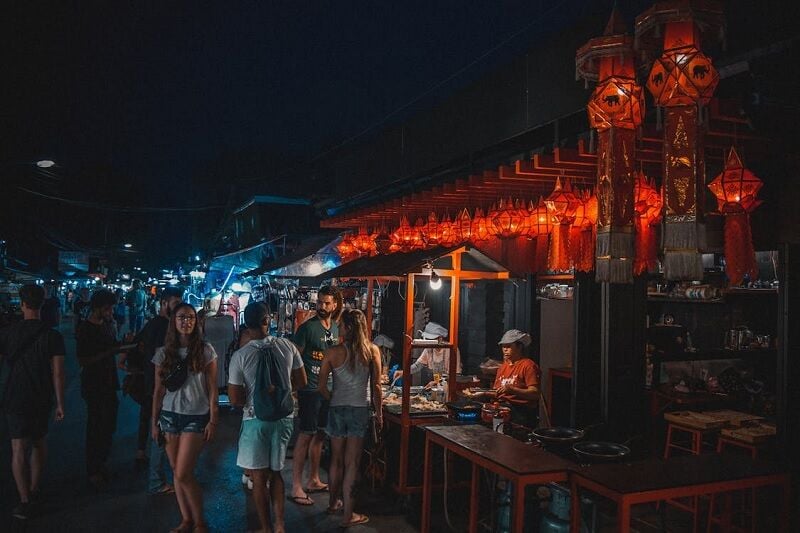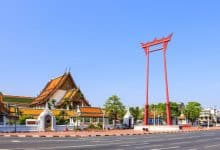Thailand’s walking tourism boosts local culture, sustainability

Walking tourism is increasingly popular as travellers seek to immerse themselves in local cultures and explore neighbourhoods more intimately.
The United Nations Tourism Organisation (UNWTO) notes that walking tourism fosters a deeper connection with local communities, nature, and culture.
This growing trend aligns with the global push for sustainable tourism and satisfies the rising demand for outdoor activities. However, the supply of walking-friendly areas often falls short due to access issues, inadequate public transport, and concentrated investment in specific regions.
Somradee Chitchong, Deputy Governor for Domestic Marketing at the Tourism Authority of Thailand (TAT), highlighted how walking has become a significant aspect of Thai tourism.
“During a trip, we always casually say where shall we go for a walk after a meal or before heading back to the hotel.”
This cultural habit has led to the creation of walking streets in major Thai cities, bustling with shops catering to tourists. Post-pandemic, the focus has shifted to exploring neighbourhoods on foot, providing visitors with unique stories and insights. Historic sites, authentic local activities, and street food are among the main attractions.
Mana Art Gallery
There are numerous walking neighbourhoods across Bangkok and Thailand that are now unique and can be developed further as Somradee added. For instance, Yaowarat and Ban Tad Thong in Bangkok offer diverse food experiences.
In Sakon Nakhon province, Pha Kram Road, known as Indigo Street, features locally-made indigo fabric products and cultural activities such as small shows, film screenings, and live music, aimed at attracting visitors, especially young people.
Local artist Pi Near recently held an exhibition at Mana Art Gallery near Bangkok’s Hua Lamphong area, which served as the city’s main railway station until 2023. Art shows and festivals like the Awakening lighting art installation add to the allure of areas like Talat Noi and Charoen Krung, enriching the walking experience.
Walking tourism also addresses sustainability concerns. Panit Pujinda, President of the Thai City Planners Society and a lecturer at Chulalongkorn University’s Faculty of Architecture, emphasised that walking allows people to experience a city in greater detail and at a slower pace.
While walking, shophouses and vendors quickly become evident as Panit said. Although this might not generate more revenue, it efficiently distributes income among small business operators.
Despite its benefits, walking tourism in Thailand faces challenges, particularly regarding safety and accessibility. Many walking streets are not designed to accommodate all visitors, with common obstacles on paths posing problems for pedestrians, especially wheelchair users.
Public transport
Motorcycles often share pavements illegally, and the cleanliness of some streets, particularly in rural areas, is sometimes poorly managed. Additionally, a lack of public transport and parking facilities can deter repeat visits.
In most parts of the capital, it certainly cannot be described as a walkable city as Panit noted. Bangkok’s development has resulted in large city blocks, necessitating long commutes and increasing travel expenses.
Public transport mainly serves major roads, making vehicle ownership almost essential. With only 7% of Bangkok’s total area dedicated to roads, compared to the global average of 15-20%, the city faces significant traffic challenges.
Even if more roads were built, it might not alleviate traffic congestion, as many residents prefer private vehicles due to the city’s vast distances and limited public transport options. Bangkok’s traffic conditions make walking along pavements unsafe, requiring pedestrians to remain vigilant.
Urban development in Thailand faces another issue: land categorisation. Unlike developed nations where private land can be allocated for public use, Thai cities primarily classify land as either public or private.
Panit pointed out that in Tokyo, private developers often leave space in front of their developments for public use, encouraging pedestrian activity and interaction.
Walkable district
For a walkable district to thrive, authorities must start with areas offering strong potential and easy access, such as those surrounding significant buildings or transport hubs.
The redevelopment of the Silom district serves as an example, with its lively street activities, food vendors, and proximity to BTS and MRT stations. However, local governments must consider environmental and local contexts rather than imitating foreign models.
Any development should cater to local demand and preserve the area’s character, avoiding an influx of tourists or unsuitable activities. Sustainable walking tourism projects must provide good storytelling opportunities and meet local needs.
The TAT promotes evening walking tours, allowing visitors to explore cities in cooler temperatures. Popular areas include the Mae Kha Canal in Chiang Mai, Phuket’s old town, and a street in Songkhla with vibrant street art.
Pak Khlong Talat, Bangkok’s famous flower market, is experiencing a revival following a slump due to regulatory changes in 2016. Events and exhibitions, such as those during Bangkok Design Week, attract both young Thais and foreign visitors.
Supitcha Tovivich, a lecturer at Silpakorn University, noted that creating a walkable route requires an atmosphere generated by street activities and vendors.
Economic growth
Urban development must prioritise inclusivity, blending locals and tourists while maintaining order and informality.
A balanced approach should combine physical connectivity, social interaction, and economic growth, ensuring that walking tourism contributes positively to the community, reported Bangkok Post.
Latest Thailand News
Follow The Thaiger on Google News:


























